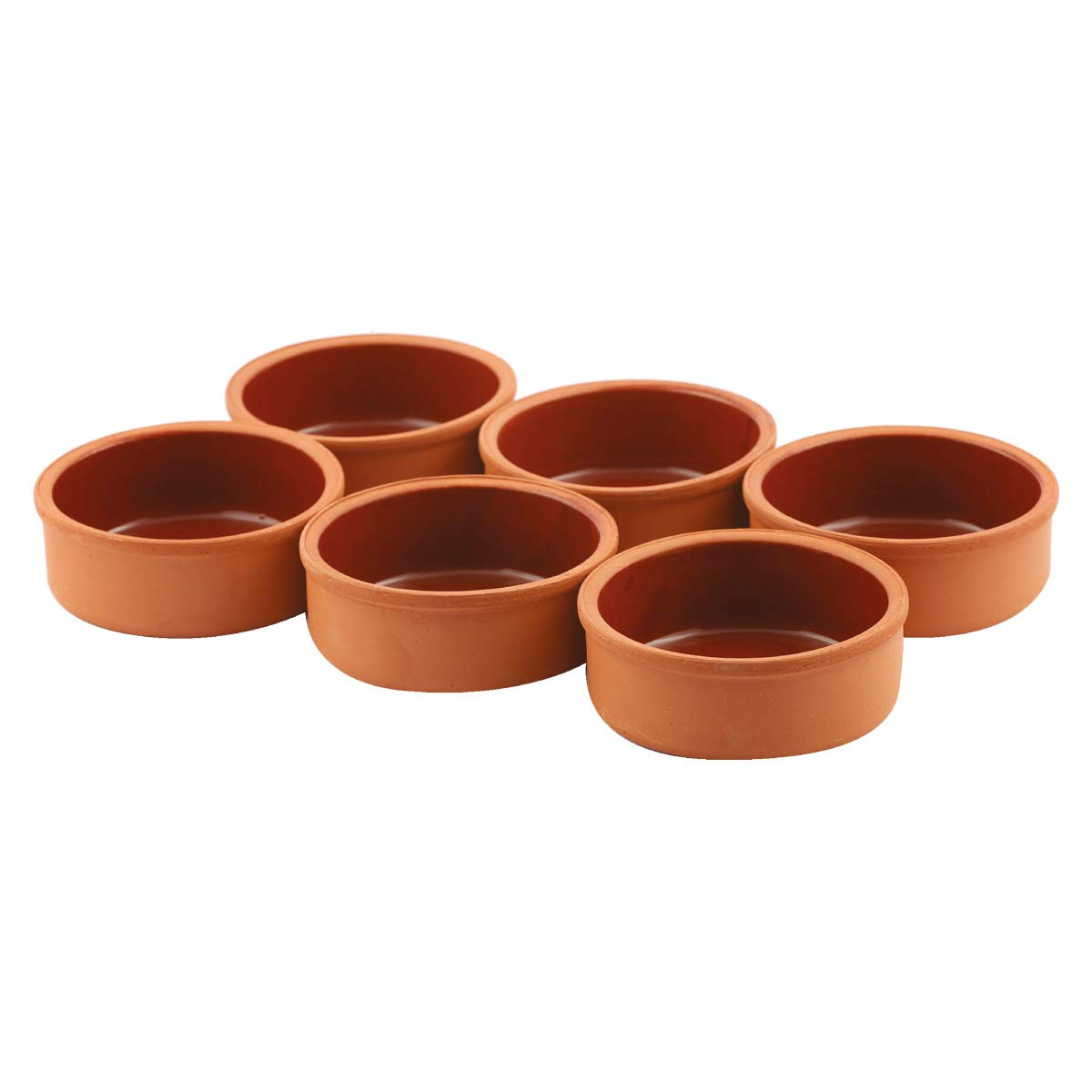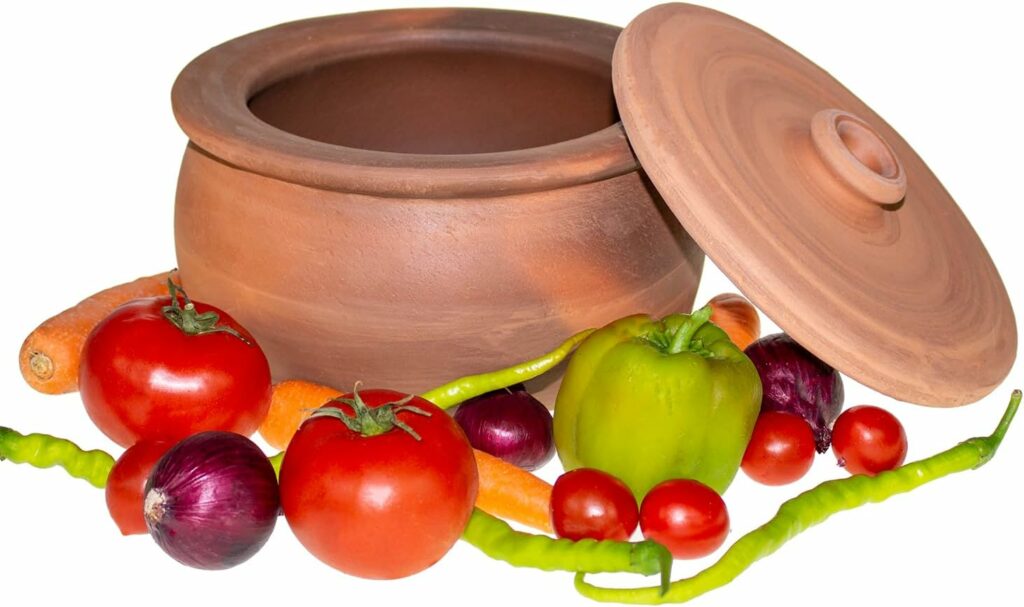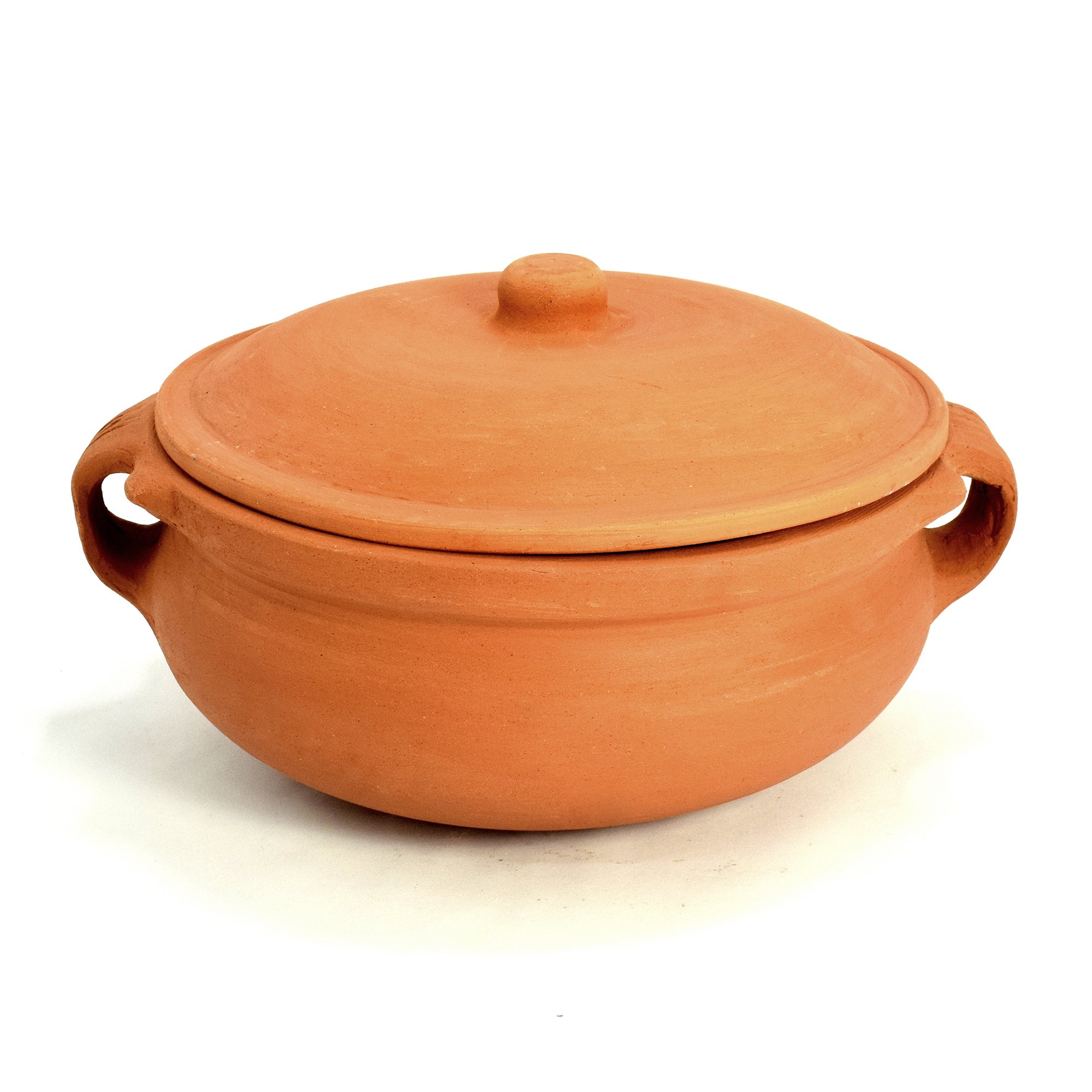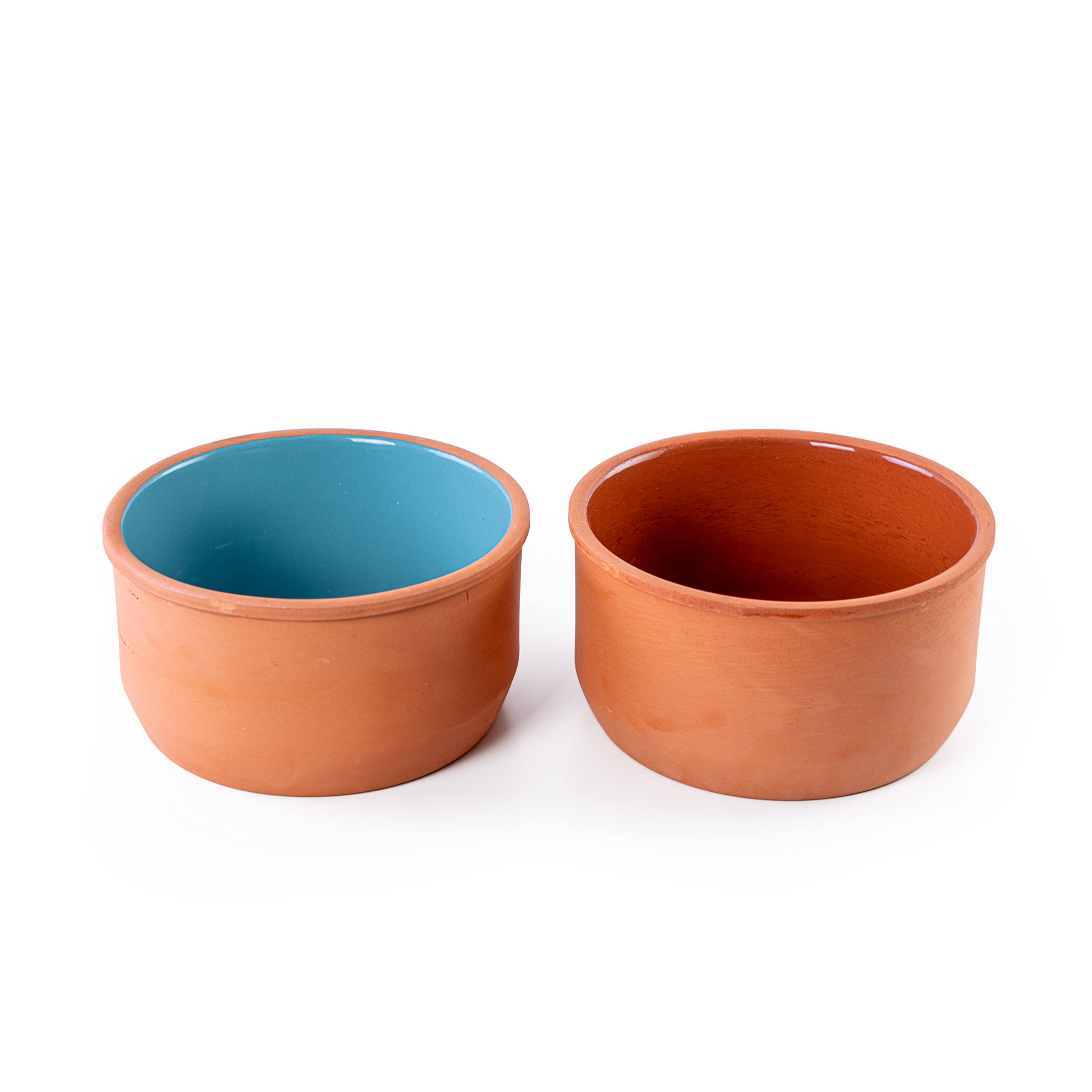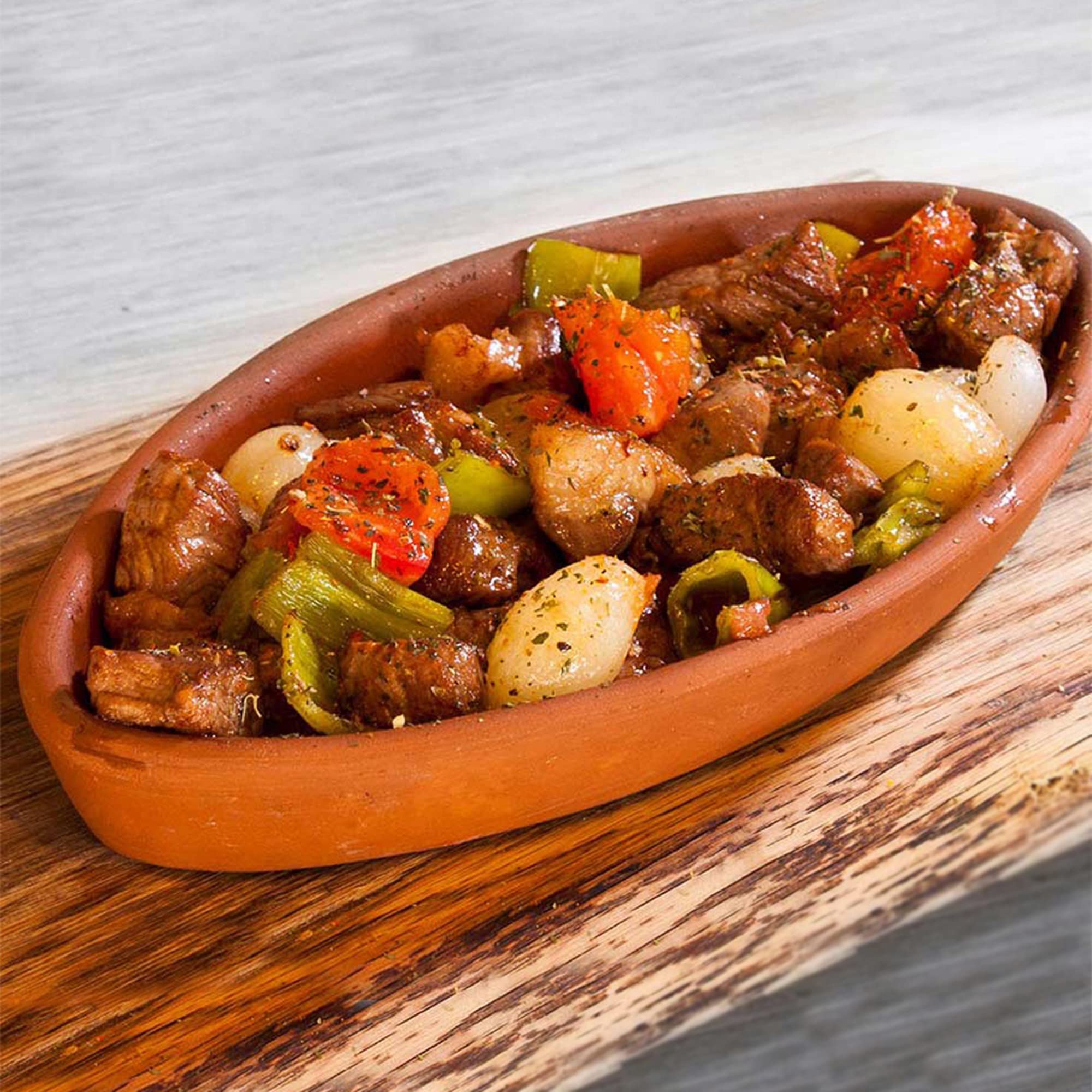Terracotta cooking pots have been a cornerstone in kitchens for centuries, offering a unique combination of tradition and functionality. These pots are known for their earthy charm and remarkable ability to simmer food evenly and thoroughly.
Terracotta is made from fired clay and offers excellent heat retention, making it ideal for slow-cooking recipes that benefit from gentle, consistent heat, just like a double boiler. The porous nature of terracotta also allows for slow evaporation of cooking moisture, intensifying flavors, and tenderizing meats, making them succulent and delicious.
When choosing the best terracotta cooking pot, one should consider the quality of the clay and construction. The pot should be lead-free to avoid health risks, and the craftsmanship should ensure that the pot will withstand the thermal shock of varying temperatures.
Size is also an important factor, as it needs to suit the volume of food you typically cook, and the pot’s handles should be sturdy and comfortable, allowing for safe transport from oven to table.
Maintenance and compatibility with your cooking surfaces are crucial points to ponder. Some terracotta pots can go directly on a stovetop flame (with a diffuser), while others are designed only for oven use.
Understanding how to care for and season your terracotta pot will extend its life and improve your cooking experience. After evaluating several options for quality, durability, and functionality, I’ve honed in on a selection that promises to elevate your culinary endeavors.
Best Terracotta Cooking Pot
In my search for more sustainable and health-conscious cookware, I’ve found that terracotta cooking pots are a fantastic choice. They’re perfect for various plant-based recipes, from hearty stews to baking crusty bread.
Let’s look at some of the best terracotta cooking pots available that are sure to enhance any vegan kitchen.
OITRCSS Clay Casserole
The OITRCSS Clay Casserole is a solid choice if you’re seeking an eco-friendly, versatile cooking vessel with a rustic charm.
Pros
- Perfect for slow cooking, delivering truly unmatched flavors.
- Multiple heat source compatibility offers tremendous versatility.
- The natural unglazed terracotta material ensures a healthy cooking process.
Cons
- Without glazing, it may require careful maintenance to prevent issues like mold.
- Might be smaller than expected based on product images.
- The unglazed surface can be tricky to clean if food gets burned on.
I recently had the chance to cook with the OITRCSS Clay Casserole, and the natural terracotta material felt just right. The earthenware distributed the heat evenly, which is essential for getting that perfect simmer without scorching.
Handling this casserole was a breeze across different heat sources. Plus, moving it straight from the oven to the table kept my vegan stew warm throughout the meal! It seems committed to an eco-friendly approach.
While I appreciate the eco-friendly materials and design, the unglazed surface means staying vigilant to prevent molding, especially in humid environments. Also, the size was a tad smaller than anticipated, leading me to save it for meals for one or two people.
Terra Cotta Clay Pots
I’m convinced these clay pots are a kitchen must-have for anyone who loves the purity and taste that comes with terracotta cookware.
Pros
- Enhances flavors in plant-based dishes
- Eco-friendly and non-toxic materials
- Easy cleanup and maintenance
Cons
- May vary in size due to being handmade
- Fragile and can break during shipping
- No lids included
I recently had the chance to cook with these Terra Cotta Clay Pots, and I’ve been quite impressed with their performance. The natural terracotta material contributes to a unique and authentic tasting experience.
Handling these pots, you immediately notice the quality of craftsmanship. They’re functional and quite appealing to the eye, doubling as a rustic centerpiece on my dining table. Cleaning was a breeze, too, which I’m always grateful for.
On the downside, their handmade nature means there’s some inconsistency in size. I appreciate the uniqueness of each pot, but it could be an issue if you require precision. Also, while I love the aesthetic, they can be delicate.
Biandeco Clay Pot
I think this pot is best left for decorative purposes rather than cooking, due to its poor reviews and functionality issues.
Pros
- Contributes to healthy cooking by avoiding toxins
- Versatile for many types of dishes, including vegan recipes
- Adds a charming vintage aesthetic to the kitchen
Cons
- Poor customer feedback regarding water retention
- Prone to breaking, which suggests fragility
- Requires hand washing, may not be convenient for everyone
I recently got the chance to use the Biandeco terracotta cooking pot. Using it is a delightful experience since the pot’s unglazed, natural material ensures that no harmful substances meddle with the flavors or health benefits of the ingredients.
However, not all is perfect with this pot. It seems barely functional based on recent user reviews. Some people reported that it couldn’t even retain water properly, a fundamental aspect anyone would expect from quality cookware.
Unfortunately, I noticed the exterior becoming suspiciously damp. Despite the pot’s promise to withstand stove and oven use, this vulnerability worried me about long-term durability. Additionally, the requirement for hand washing might deter busy cooks from seeking convenience alongside quality.
My Terracotta Companion
After using this pot for my vegan dishes, I’d say it’s a great addition to the kitchen for anyone looking to infuse traditional flavor into their meals.
Pros
- Enhances flavor complexity of vegan curries
- Perfectly sized for meals for one or two
- Exudes an authentic rustic charm
Cons
- Fragile; requires careful handling
- Longer cooking times compared to modern cookware
- Limited capacity not suitable for large gatherings
Preparing my vegan curry in this Ancient Cookware pot made a difference. There’s something special about how the terracotta material allows the ingredients to simmer and blend their flavors.
Truthfully, I was charmed by its handmade aesthetics the moment I saw it. It doesn’t only cook food; it serves as a conversation starter on my kitchen shelf.
However, I’ve learned to be more gentle since buying this pot. It’s not as hardy as my stainless steel pots, and a slip could mean the end of its curry-concocting days. Patience is key too, as my dishes take a tad longer to heat.
Luksyol Clay Bowls
If you appreciate authentic cookware with a touch of artistry, these terracotta bowls might just be your kitchen’s new favorites.
Pros
- Retain heat well for sustained warmth of dishes
- Visually appealing design that doubles as kitchen decor
- Microwave and oven-safe for versatile use
Cons
- Hand wash only; not as convenient as dishwasher-safe options
- Fragility requires careful handling and storage
- Limited size might not accommodate larger meals
I recently had the chance to whip up a steaming pot of vegan chili using these Luksyol Clay Bowls, and I must say, the heat retention was impressive. The warmth of the dish lingered long after being served, which made the dining experience more enjoyable.
After the meal, I appreciated the bowls’ capability to go into the microwave. Reheating leftovers was a breeze, and there was no compromise in taste or texture.
However, it’s not all perfect. I handled the bowls with extra care, as they are quite fragile owing to the handmade terracotta. Additionally, the size may not suit those looking to prepare larger meals.
Hakan Clay Pan Set
If you’re into health-conscious cooking with a touch of tradition, this terracotta set is just what your kitchen needs.
Pros
- Enhances flavor through slow cooking
- Eco-friendly and free from harmful toxins
- Versatile for oven and microwave use
Cons
- Fragile nature may lead to chips or cracks
- No lids included
- Limited in size for larger meals
I recently got my hands on the Hakan Handmade Oval Clay Pan Set, and it’s been a worthy addition to my kitchen. Slow-cooking vegetables in these terracotta pots brings out an incredible depth of flavor you often miss with standard cookware.
The clay pans feel sturdy and are a breeze to handle, particularly because of the inner glaze, making cleanup much easier. Since they’re microwave-safe, I can quickly reheat leftovers without transferring them to another container.
However, terracotta’s fragility means you have to be gentle. I’ve been extra careful not to knock them against hard surfaces. The lack of lids isn’t a deal-breaker since foil does the trick, but integrated lids would have been a convenient bonus.
READ NEXT: Best Fondue Sets of 2024: Your Guide to Gourmet Melting Moments
Buying Guide
When I’m on the hunt for the perfect terracotta cooking pot, there are several key features to consider to ensure I’m making the best choice for my needs.
Material Quality
First up, it’s crucial to check the quality of the terracotta. It should be high-grade and free from harmful substances since I’ll use it to cook my delicious plant-based meals. The pot should be thick enough to withstand heat without cracking.
Size and Shape
The size and shape of the pot depend on what meals I plan to whip up. A larger pot with a larger volume is ideal for large batches of stew or soup. A smaller, more compact pot might be the way to go if space is limited.
Heat Tolerance
Terracotta pots need to tolerate a range of temperatures. Since I’m looking for something that can go from oven to table, I’ll check if it can endure high heat without damage.
Lid Fit
The lid should fit snugly to lock in steam and flavors. A loose lid can lead to longer cooking times and potentially less tasty food.
Maintenance
Ease of cleaning is a deal-breaker. I’ll look for pots that are relatively easy to clean by hand and don’t require special treatment. However, remember that terracotta is porous and might hold onto flavors or stains from strong ingredients.
Compatibility
Lastly, compatibility with my cooking setup is vital. Whether I have an induction, electric, or gas stove, or more about the oven or the open fire, making sure the pot I choose is compatible saves me from a kitchen headache later on.



